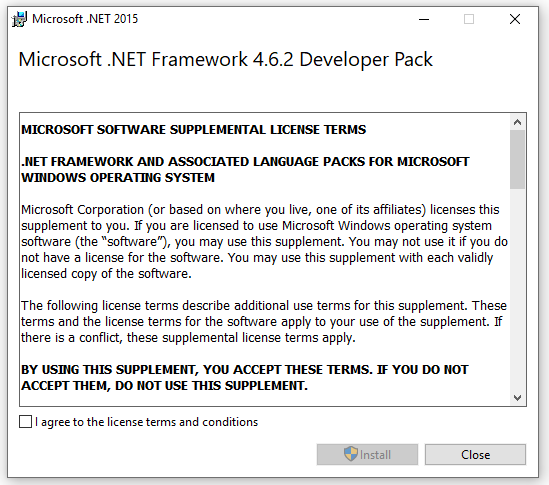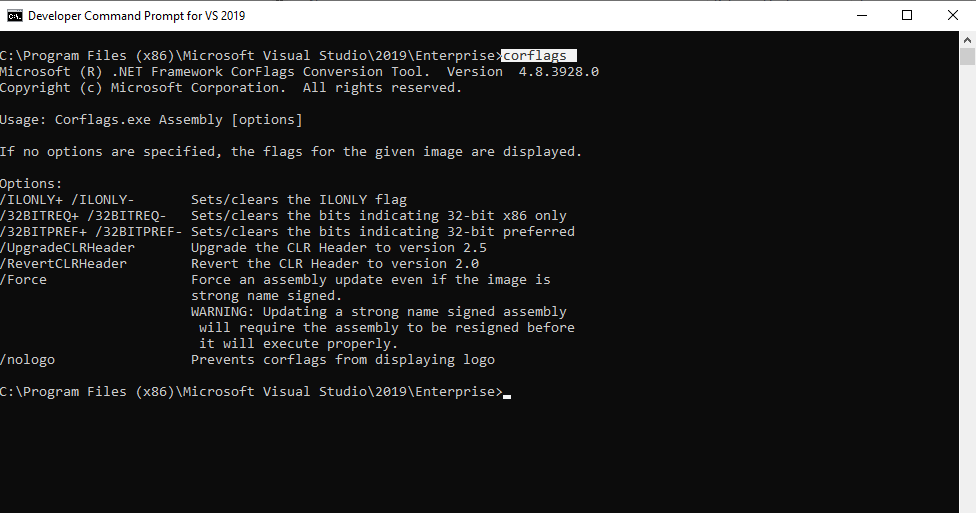

- MICROSOFT VISUAL BASIC POWER PACK GLOBAL ASSEMBLY CACHE HOW TO
- MICROSOFT VISUAL BASIC POWER PACK GLOBAL ASSEMBLY CACHE FOR MAC
- MICROSOFT VISUAL BASIC POWER PACK GLOBAL ASSEMBLY CACHE INSTALL
- MICROSOFT VISUAL BASIC POWER PACK GLOBAL ASSEMBLY CACHE FULL
- MICROSOFT VISUAL BASIC POWER PACK GLOBAL ASSEMBLY CACHE CODE
To install and test the global tool, first open the Terminal app, or your favorite alternative.

Now that we have created a NuGet package from the project, we will register the global tool and try it from the command line. In our case it will go into a folder named nupkg in the project folder. To get there, right-click your project and then select Pack as seen in the next image.Īfter you invoke the Pack command, the NuGet package (.nupkg file) will be created in the directory we specified in the PackageOutputPath property. To create a NuGet package from this project you can use the built in Pack command offered by Visual Studio for Mac. We will first need to package this as a NuGet package. Let’s move on to try executing this as a global tool at the command line.
MICROSOFT VISUAL BASIC POWER PACK GLOBAL ASSEMBLY CACHE CODE
Since the code is already printing “Hello World!”, we can use this as is with no modifications for now. In the Program.cs file you’ll find that the following code was added when we created the project. Now let’s take a closer look at the code. If you’re just creating a tool to play around, or for personal use, I recommend just setting PackAsTool, ToolCommandName and PackageOutputPath. It’s a good idea to specify these properties now, so that you can focus on the code for the global tool. Specifies the URL for the repository where the source code for the package resides and/or from which it’s being built. For each release to this must be unique.Īn SPDX license identifier or expression. nupkg file should be placed.ĭescription that will be shown in and other places. Set this to true for all global tools, this will enable packing the project into a NuGet package. Below you’ll find a description of each of these properties. There are two sections of properties that I have added here. Ĭopyright 2020 © Sayed Ibrahim Hashimi. All rights reserved. Let’s look at the properties I typically set when creating a global tool.
MICROSOFT VISUAL BASIC POWER PACK GLOBAL ASSEMBLY CACHE FULL
You can see the full list of NuGet related properties that can be set over at NuGet metadata properties. If you are planning to publish the package to you will also want to specify some additional properties that will surface to users. You can do this by adding a property named PackAsTool and setting it to true in the. To make the project into a global tool, we must enable the project to be packed into a NuGet package. csproj file, an MSBuild file that defines the project, will be opened in the editor. Note: the menu option to edit the project file is moving to the top level in the context menu as Edit Project File soon. This is demonstrated in the following image. To edit the project file, right click on the project in the Solution Pad and select Tools > Edit File.

Now that we’ve created the project, the first thing to do is to customize the project file to add properties that will make this a global tool.

Click Next after selecting that, and then provide the name and location for the project. NET Core > App > Console Application.Īfter selecting Console Application, click Next to select the version of. If you already have Visual Studio open, you could also use the ⇧⌘N shortcut to open the new project dialog.įrom here we will create a.
MICROSOFT VISUAL BASIC POWER PACK GLOBAL ASSEMBLY CACHE FOR MAC
After launching Visual Studio for Mac you’ll see the dialog below, click New to begin creating the project. Since global tools are console applications, we will use the console project template to get started. The first thing you’ll want to do when creating a global tool is to create a project.
MICROSOFT VISUAL BASIC POWER PACK GLOBAL ASSEMBLY CACHE HOW TO
In this post we will discuss how you can create global tools when developing on macOS as well as how to prepare them to distribute using NuGet. NET Core Tools - local installation section in Announcing. You can also create local tools, those that are associated with specific projects and not available globally. NET Core is cross platform, your global tools will also work cross platform, assuming your code doesn’t contain any platform specific code. After developing your tool, you can distribute it on, or any other NuGet repository, to share the tool with others. For example, you can create tools to minify image assets, simplify working with source control, or perform any other task that you can automate with the command line. You can use global tools to simplify common tasks during your development workflow. NET Core is the support for global tools.


 0 kommentar(er)
0 kommentar(er)
